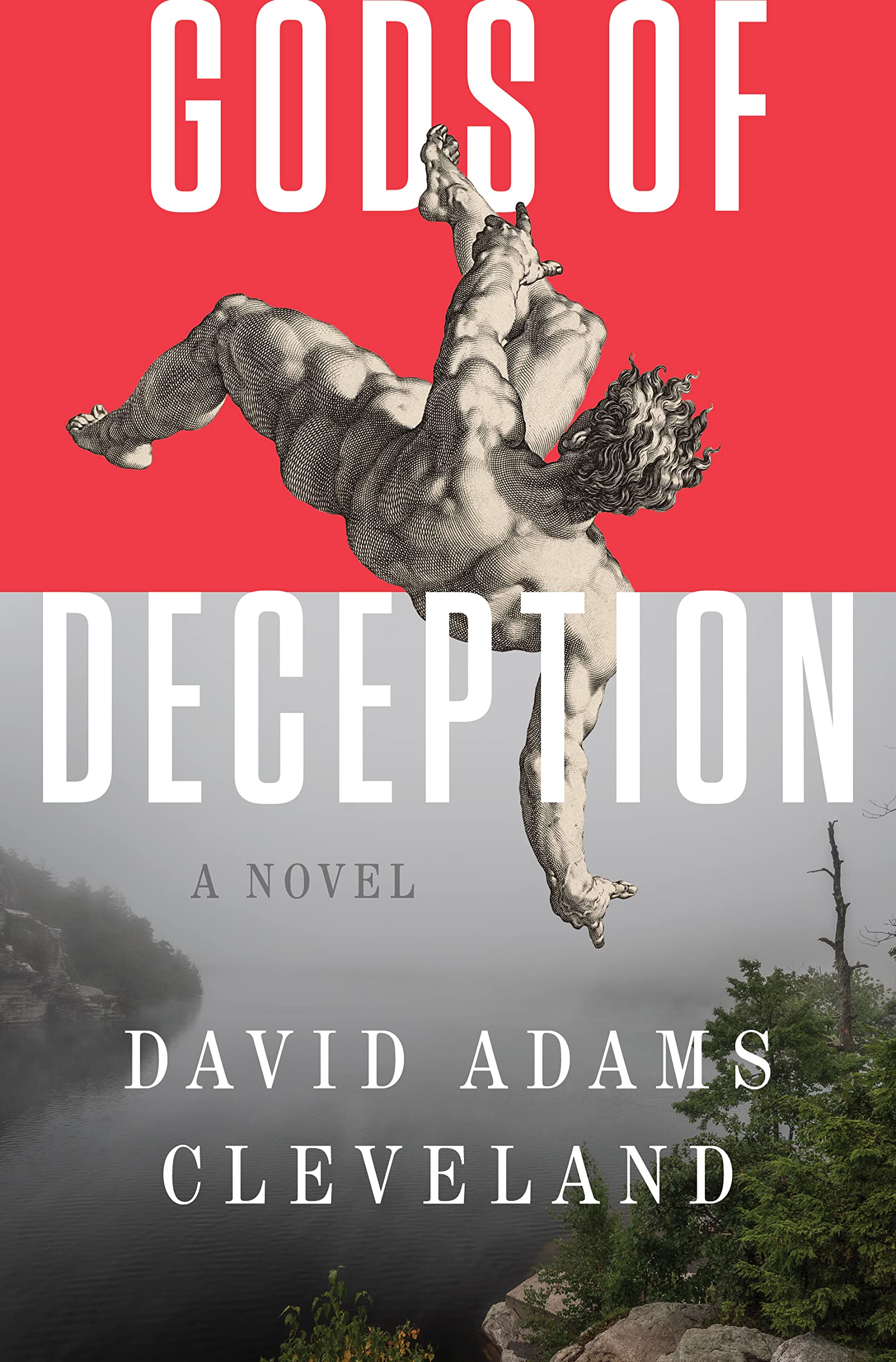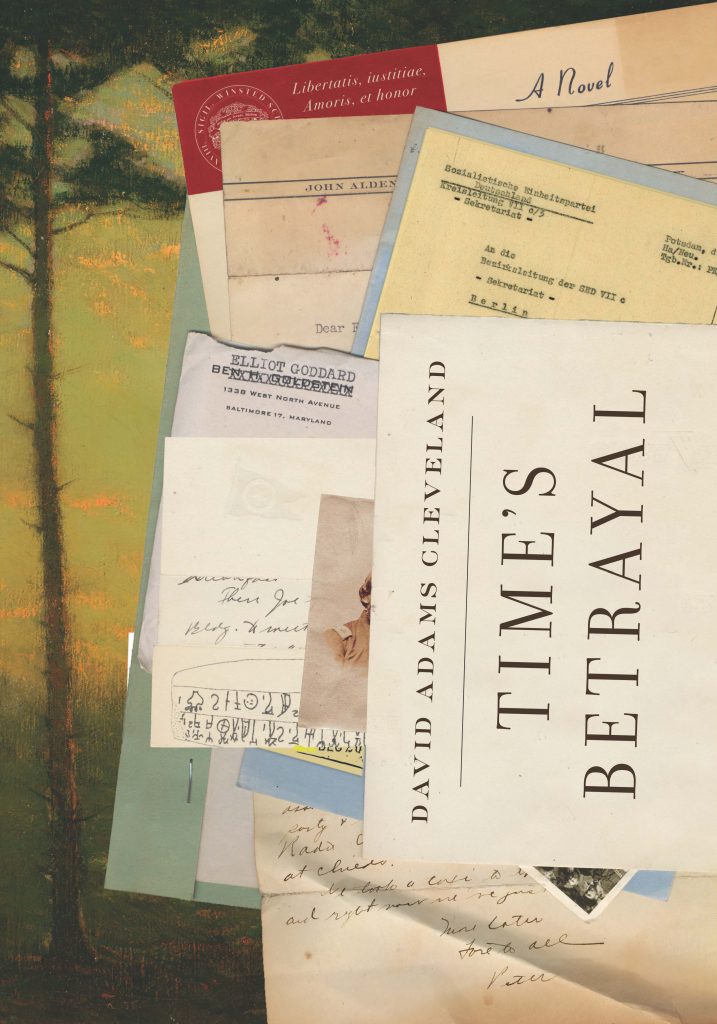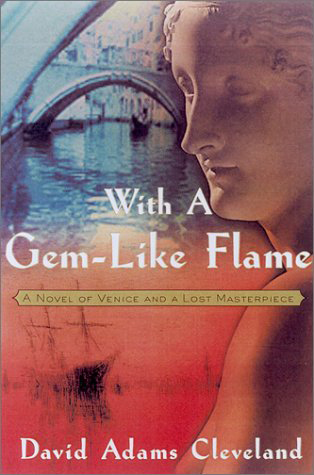Gods of Deception

OVERVIEW
At age ninety-five, Judge Edward Dimock, patriarch of his family and the man who defended Alger Hiss in the famous 1950 Cold War "trial of the century," is writing his memoir at his fabled Catskill retreat, Hermitage, with its glorious Italian Renaissance ceiling. Judge Dimock is consumed with doubts about the troubling secrets he's kept to himself for over fifty years-secrets that might change both American history and the lives of his entire family. Was his client guilty of spying for Stalin or not? And if guilty, did Hiss's crimes go far beyond his perjury conviction-a verdict that divided the country for a generation?
Dimock enlists his grandson, George Altmann, a brilliant Princeton astrophysicist, in the quest for truth. Reluctantly, George finds himself drawn into the web of deceit that has ravaged his family, his curiosity sparked by a string of clues found in the Judge's unpublished memoir and in nine pencil sketches of accused Soviet agents pinned to an old corkboard in his grandfather's abandoned office. Even more dismaying, the drawings are by George's paternal grandfather and namesake, a once-famous painter who covered the Hiss trial as a courtroom artist for the Herald Tribune, only to die in uncertain circumstances in a fall from Woodstock's Fishkill Bridge on Christmas Eve, 1949. Many of the suspected agents also died from ambiguous falls (a KGB specialty) or disappeared behind the Iron Curtain-and were conveniently unable to testify in the Hiss trial.
George begins to realize the immensity of what is at stake: deceptive entanglements that will indeed alter the accepted history of the Cold War-and how he understands his own unhappy Woodstock childhood, growing up in the shadow of a rumored suicide and the infidelities of an alcoholic father, a roadie with The Band.
In Gods of Deception, acclaimed novelist David Adams Cleveland has created a multiverse all its own: a thrilling tale of espionage, a family saga, a stirring love story, and a meditation on time and memory, astrophysics and art, taking the reader on an unforgettable journey into the troubled human heart as well as the past-a past that is ever present, where the gods of deception await our distant call.
Read MoreLove’s Attraction

OVERVIEW
From literary Concord to the backwater canals of Venice, Love's Attraction takes readers on a tantalizing and thought-provoking journey as Michael Collins, a Washington political fixer facing an impending bribery scandal, is suddenly confronted with a past he never knew and a legacy of heartbreak and deception from which he failed to escape.
Michael Collins is returning to Lowell, the derelict mill city of his childhood, and the funeral of his estranged brother. Driving route 128, he finds himself compelled to stop in nearby Concord and at Emerson Academy, where his precocious youth as a talented pianist and dreams of a rowing scholarship to Harvard ended in devastating scandal. In his senior year, he—the "Lowell-boy"—fell deeply in love with the winsome Sandra Palmer, a blueblood Yankee from an illustrious Concord family, who inexplicably betrayed him—a bitter expulsion that led him down a path he finds himself regretting each day. As Michael revisits scenes of their love affair twenty years later, Sandra's forthright integrity—the passionate and sensitive artist he remembers—shines forth and their wrenching breakup makes less and less sense.
Leaving the Lowell cemetery on the following day, Michael is almost run down by a red pickup truck, perhaps a warning to keep his mouth shut in an upcoming grand jury investigation. Michael decides to disappear by disguising himself as a Thoreau scholar, hiding out in plain sight at the historic Concord Inn. From this oddly liberating vantage point—the life he never had—he discovers the shocking news of Sandra Palmer's recent suicide at Harvard. Made even more troubling when he learns that Sandra had a twin sister, "helter-skelter" Angela Palmer, seventies radical and eighties porn star and internet entrepreneur, who seemingly disappeared around the same time as her sister's senseless suicide.
With the FBI closing in, Michael's investigation into Sandra Palmer's untimely death transforms into an odyssey of discovery about her family's glittering if troubled past: A search for love and redemption that will finally draw him back to his own family roots in Venice. And to the Venice of 1914 as limned in the diary of Sandra's grandfather, the once famous painter, friend to Singer Sargent and Whistler, Joseph Palmer... where yet another tale of deceit and obsession unfolds about the artist's pianist wife and model—Sandra Palmer's namesake, who befriended a poor Venetian stonecutter in the months before World War One. The tragedy of this talented woman's death—she played Boston's Symphony Hall at sixteen—created the world that the young Michael and Sandra unwittingly inherited.
Love's Attraction is a mysterious, romantic novel that explores universal themes of identity: how memory (or its lack), talent and intemperate desires—embodied in art as well as in our genes—are passed down through families to influence our hidden selves. The novel speaks to the role of metamorphosis in our lives and how the transforming elixir of love's attraction makes us most fully human.
Read MoreTime’s Betrayal

OVERVIEW
Time’s Betrayal is an epic multigenerational family saga covering the years from the battle of Antietam to the fall of the Berlin Wall. Touching on elements in John le Carré’s A Perfect Spy and John Knowles’s A Separate Peace, the novel chronicles a son’s search for a larger-than-life father, a CIA agent who disappeared in the early fifties, leaving behind a distraught wife and lovers, not to mention a Pandora’s box of devastating secrets and unanswered questions that baffled all who investigated his fate—a fate as beguiling as it is mysterious. This is also a story about the crumbling edifice of the eastern Establishment after World War II and in Vietnam-era America. A poignant coming-of-age tale, it is related though the eyes of Peter Alden, whose school days are shattered when he overhears a conversation about his father from two CIA colleagues: how John Alden, a world-famous archaeologist turned OSS and CIA officer, who vanished through Checkpoint Charlie, may have been a traitor.
Opening in New England during the late 1960s and set amid the idyllic Berkshire summer homes of the Alden and Williams clans, founders of the prestigious powerhouse school Winsted, incubator of famous statesmen and CIA operatives, Time’s Betrayal takes the reader on a far-flung journey from the abolitionist Civil War era to Nazi-occupied Greece and to London during the Blitz, to the darkest days of the Cold War and Vietnam, to Prague during the Velvet Revolution, and timeless Venice. More than just an insider’s chronicle of America’s postwar ascendency and ensuing decline—and the betrayals of love and principle that come in the wake of blind ambition—Time’s Betrayal portrays the agonized compromises to America’s founding ideals as glimpsed through the privileged lives of the country’s best and brightest.
Tapping into spy thriller territory, and the KGB penetration of American secrets by Kim Philby and the Cambridge Five, the narrative unfolds through a series of engrossing, if agonizing, love stories that cross the boundaries of generations in ways both profoundly unsettling and deeply moving. Although Time's Betrayal is a literate genre-bender and suspenseful page-turner full of twists and turns, the novel is really about how family history shapes who we are and how memory—the river of Time—guides our joint destinies, testing our most cherished hopes, shaping who we are and what we believe, and teaching us that the essential truths of our humanity—freedom, justice, love, and honor—must be reclaimed in every generation.
Read MoreWith a Gem-Like Flame

OVERVIEW
Common sense dictates that it simply cannot exist — the "Leopardi Madonna," a glorious treasure by the fifteenth-century master Santi Raphael. All the reference books and reliable scholarship indicate that the painting was destroyed in 1945, when the Allies bombed a Nazi warehouse filled with looted art. Only now the Madonna has reappeared, it seems, in this stunning, original thriller that uncovers greed and treachery in the rarefied precincts of the art world. Summoned to Venice from America to view the painting, Renaissance scholar and sometime-art dealer Jordan Brooks returns to the city that had enchanted him twenty years before. As he ponders the possibility that a fake was set afire a half century earlier and the authentic work has resurfaced—or that the actual masterpiece was lost in the conflagration and a magnificent fake has taken its place—he also contemplates the strange and secret auction which offers him a chance to bid on the painting. Set against the backdrop of Venice in late autumn, when the timeless city's rain-swollen lagoons threaten to swamp all her treasures, the novel limns the path that lands Jordan on the doorstep of his former teacher, Giorgio Sagredo, who has compromised his ideals to sell the Madonna. It leads Jordan, too, into a horde of amoral art dealers eager to make a killing and, more fortuitously, introduces him to Katie, a young American student who has a scent for the truth and a way of turning up at the moment he needs her most.
Read More